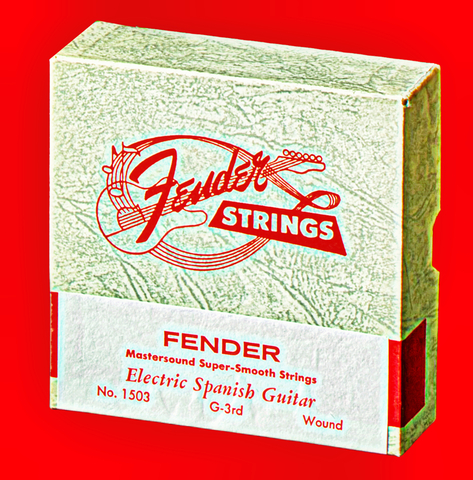How To Play Common Guitar Scales

In this guide, we will teach you wow to play common guitar scales.
So you’re looking to learn how to play the guitar? That’s an incredibly smart choice. The guitar is an incredible instrument that fits into most musical genres globally—especially rock and roll. Not only is the lead guitar a popular instrument, but it’s also perhaps the most famous musical instrument globally.
Some of the best-ever guitarists include Slash, Jimmy Hendrix, Eric Clapton, Jimmy Page, George Harrison, and Jeff Beck. They were all masters of the guitar and have played an integral role in the growth of music worldwide.
That said, how do you become a great guitarist, especially if you’ve never played the guitar before? First, you need to undergo tons of practice. But you’ll also need to master scales. Without a strong knowledge of the guitar scales, you’ll never master the instrument.
In this guide, we will teach you about playing scales and how to use them to achieve success.
What Are Guitar Scales?

Let’s begin with the basics: guitar scales are an organised sequence of notes played in a descending or ascending order that lets you grow your finger strength and dexterity.
Guitar scales are solid building blocks for writing songs, generating guitar solos, and composing chord progressions. Different types of guitar scales—including major and minor platonic—can change the feel of the music you write.
Mastering guitar scales helps you understand the notes on your fretboard, develops your musical ear and creates a framework for building your melodies. They will make you an all-round better musician.
Here is the most common type of guitar scales that you’ll encounter:
- Major scale
- Natural Minor scale
- Pentatonic scale
- Blues scale
- Modes
You might have heard of these guitar scales before; you may even know some of these minor and major scale patterns. Right now, you don’t need to worry about modes. You should only focus on basic scales, such as the Major scale and Major Pentatonic scale.
Is It Important To Learn Guitar Scales?
Yes. Learning scales and scale shapes are important, especially if you want to become a great guitarist. Guitar scales make you a stronger musician, enabling you to learn music quickly and helping you to write top guitar solos.

Here are 7 reasons why you should master playing scales:
1. You’ll Develop Your Ear
Playing scales will help you notice the relationship between your notes and the location on the guitar. That’s essential for anything you do on a guitar.
2. You’ll Grow Your Finger Strength
Moving up and down the fretboard increases your ability to learn riffs and new songs by mastering quick moves between the notes of a scale.
3. You Can Start Shredding
Shedding a guitar means playing quickly, something all excellent guitarists can do. However, many riffs and solos have notes and patterns that come directly from a scale, helping you develop as a guitarist.
4. Learn Chords More Quickly
Did you know that chords are constructed with notes on a scale? As a result, you’ll start to gain awareness and soon build your own, making you a considerably better musician.
5. Read Music Better
The initial and most important step when reading music on a guitar is knowledge of scales. You’ll become motivated as you start to see the benefits in action.
6. You Can Play Better Guitar Solos
Scales play an integral role in how guitarists make guitar solos. Knowing your scales will allow you to become comfortable in soloing over a particular chord progression in any key. In addition, guitar scales will help you understand how guitarists create guitar solos.
If you’ve ever listened to a guitar solo and thought “how did they make that?” You’ll soon understand when you create guitar solos.
7. Write Better Music
Knowing guitar scales will help increase your ability to write thought-provoking music. That’s because you’ll have a set of rules for what doesn’t sound good together and what fits well.
Similarly to soloing, scales help you provide you with ideas for riffs and licks that will compliment a song.
8. You’ll Gain a Better Overall Appreciation for Music
Although this reason won’t make you a better guitar player, it’ll still make you a better overall musician. The more you know about music theory, the more you’ll understand the amount of structure required to create a great piece of music.
The amazing thing about music is that it doesn’t need to follow a specific structure. You can create something that doesn’t work in music theory, but it sounds great to the ear. However, you should know the basic rules before breaking them, and guitar scales are perfect for that.

The Different Types of Guitar Scales
1. Major Scales
The Major scale pattern is the most used in guitar theory and academia. The major scale begins with two notes followed by a half.
After that, there are three more whole notes and the other half. As a result, a major scale pattern shows up as W-W-W-W-W-W-H.
2. Minor Scales
The minor scale has two different names: natural minor and aeolian mode. However, there are seven different notes in minor scales with the eighth repeating the first note.
Minor scales also follow a pattern; they have semitones on three of the whole notes, making them different from the major scale. Therefore, the minor scale shows up as W-H-W-W-H-W-W.
3. Harmonic Minor Scale
The Harmonic Minor scale is similar to the Natural Minor; however, the only difference is the last scale degree. The harmonic minor still has eight notes in total that you’ll need to play.
Nonetheless, you must know what a scale degree is to understand the Harmonic Minor scale option.
4. Major Pentatonic Scale
The Major Pentatonic scales are completely different from the Major and Minor options. Instead of seven varying notes, the major pentatonic scale only has five notes.
As a result, the Major Pentatonic scales are W-W-W+H-W-W+H. Being able to master the major pentatonic scale is excellent for developing your guitar skills.
5. Minor Pentatonic Scale
The minor pentatonic is the simplest one to learn. It’s highly common and you’ll have no issues finding songs that use it.
The Minor Pentatonic scale is not a diatonic option, so it doesn’t have two steps. As a result, the pattern is W+H-W-W-W+H=W.
6. Blues Scale
The Blues Scale uses 6 notes (hexatonic) and is nearly identical to the minor pentatonic. However, the blues scale has the addition of the blue note, otherwise called the diminished 5th.
As the Blue Scale name hints, it works well over a 12-bar blues music chord progression. When you build a blues scale, you’ll follow this pattern: W+H-W-H-H-W+H-W. In addition, the Blues Scale often pairs well with a major or minor chord progression. A course on blues guitar styles or the blues rhythm guitar is excellent for developing your skills.

What Are The 12 Major Guitar Scales?
You’ll need to learn scales if you want to become a master of guitar scales. Although it’s to start with the easy guitar scales—and we’ll get to that soon—learning all 12 will make you a considerably better guitarist.
Here are the 12 major scales that you must know:
- C Major
- G Major
- D Major
- A Major
- E Major
- B Major
- F# Major
- C# Major
- F Major
- Eb Major
- Ab Major
- Db Major
Let’s take an in-depth look at the 12:
1. C Major Scale
The notes in the C major scale include C, D, E, F, G, A, B, and C. The C key is often the first one that students explore because there are no flats or challenging sharps. Therefore, it’s relatively easy to master. You’ll need to find the root (beginning) notes of C major by pressing on the second string and third fret. After that, use tablature to play the rest of the scale.
2. G Major Scale
The G major is also one of the most popular guitar scales for beginners. The notes in G major include G, A, B, C, D, E, F#, and G. You can find the root notes of G major by pressing the third fret on your low E string.
3. D Major Scale
The D major scale is a useful guitar scale to know if you want to master pop or folk music. Because the third string of your guitar is tuned to D, the root notes of the guitar scale can be played by strumming the third string without holding any frets. The notes in D major must include D, E, F#, G, A, B, C#, and D.
4. A Major Scales
Now it’s time to enter the complex and often frustrating world of sharps; they are a semitone higher than the note written on the page. You should focus less on traditional notation; instead, use the tablature to get started.
The A major note is similar to a D major note because you can play it without holding any frets. The notes in A major must include A, B, C#, D, E, F#, G#, and A.
5. E Major Scale
There’s a strong chance that the E major scale is the first chord you learned how to play on guitar. You should find your root notes by playing the low E string without holding any frets.
However, become comfortable playing the first bar of this tab before moving to other sections on your fretboard. The notes in the E major scale must include E, F♯, G♯, A, B, C♯, and D♯.
6. B Major Scale
The B major scale is the last major scale beginning with open strings that we’re going to talk about. Find your root notes on the second fret of the second string. Beginners should focus on the first bar of the tablature before they move to other sections. The notes in B major must include B, C♯, D♯, E, F♯, G♯, and A♯.
7. F# Major Scale
You’ll find the root note on the second fret of your low E string when using the F# major scale. Musicians often joke with each other when exploring the difference between F#major and Gb major. If you ever find yourself in this type of convo, you should know they’re essentially the same key. The notes in the F# major scale are F#, G#, A#, B, C#, D#, and E#.
8. C# Major Scale
As you grow as a guitarist and learn the guitar scales, the C# major scale may become more challenging along the fretboard. However, you’ll find your root note by playing the 9th fret on the low E string. After that, use the insight you have about building major scales to play the rest of the C# major. The notes in the C# major scale are C♯, D♯, E♯, F♯, G♯, A♯, and B♯.
9. F Major Scale
When you learn the F major scale, you’ll have your first opportunity to explore flat notes. These are a semitone lower than the above notes. To locate the root note, press the first fret on the low E string. The notes in the F major scale are F, G, A, Bb, C, D, and E.
10. Eb Major Scale
The Eb major scale is one of the trickier guitar scales to learn. You’ll locate the root note by playing the 11th fret of your low E string. The notes in the Eb major scale are Eb, F, G, Ab, Bb, C, and D.
11. Ab Major Scale
If you’re looking to play most pop and rock songs, you won’t need to learn the Ab major scale straight away. That said, to become a top-class guitarist, you’ll need to master the Ab major scale, even though it’s not massively common.
Here’s the good news: locating the root note of Ab is straightforward. You should press the fourth fret on the low E string. Then, use the major scale formula and build from there. The notes in the Ab major include Ab, Bb, C, Db, Eb, F, and G.
12. Db Major Scale
The final major scale is perhaps the most uncommon. To start, play the 9th fret on the low E string. Your fingers won’t need to stretch too far when playing this scale. The notes in the Db major scale are Db, Eb, F, Gb, Ab, Bb, and C.
What Guitar Scales to Learn First?
First, you should start by learning the most common guitar scales to build your overall knowledge. But first, let’s look at what pentatonic scales are:
What Are Pentatonic Scales?
A pentatonic scale is a common five-note scale you’ll need to understand to play melodies, solos, and riffs. It’s an extremely popular technique in blues and rock music. So you’ve probably already heard pentatonic scales without knowing it.
A pentatonic scale is a five-scale note based on its corresponding eight-note scale. It’s not unusual because all pentatonic scales contain five notes instead of eight. For example, penta means five in Greek.
Because there are fewer notes to learn, these guitar scales are superb for beginners. In addition, learning these scales is a superb way for new guitarists to apply their newfound knowledge of notes and examine how they sound when played together.
Here are the different formulas required to create different pentatonic scales:
- If you choose to develop a major pentatonic scale, you’d use the 1st, 2nd, 3rd, 5th, and 6th notes of a scale. A major pentatonic scale has an upbeat, bright sound.
- If you want to use a minor pentatonic scale, you’ll need to play the 1st, flattened 3rd (b3), 4th, 5th, and flattened 7th (b7) scale notes. Instead of the brighter tones of the major pentatonic scales, a minor pentatonic scale has a more sombre tone.
Now let’s look at the main pentatonic scales and why you should learn them first:
1. E Minor Pentatonic Scale
The E minor pentatonic scale is an excellent place to begin learning guitar scales. When played in the open position, the E minor pentatonic scale is super for soloing.
For example, Led Zeppelin’s “How Many More Times”, “AC DC’s “Back in Black”, and Link Wray’s “Rumble” are all terrific examples of the E Minor pentatonic scale.
The E minor pentatonic scale contains five notes instead of the normal 8 (octave) notes in all major and minor scales. As a result, the E minor pentatonic scale is easy to learn for beginners. And because these same notes are in an open position, you can play them across open strings while fretting the second and third frets of your guitar.
Moreover, your fingers don’t need to move between the different frets and they don’t need to excessively stretch. Therefore, the E minor pentatonic is highly popular among experienced guitarists looking to create super quick solos with a dynamic feel.
The notes in the E minor pentatonic scale are E – G – A – B – D – E.
2. A Minor Pentatonic Scale (Fifth Position)
The next guitar scale to learn is a minor pentatonic scale (fifth position). Some popular songs that use this guitar scale include “Stairway to Heaven” by Led Zeppelin and “Hoodoo Bluesman” by Junior Wells
For the A minor pentatonic scale, you’ll need to learn across two octaves in the fifth position. As a result, you’ll build your fret-hand strength.
In this version of the A minor pentatonic scale, you’ll hear it stretch across two octaves, resulting in each series of five notes starting with A and the next series of five notes beginning with A.
However, you’ll take the octave up one higher. This helps beginner guitarists grow their musical ears and recognize their ability to play at either a lower or higher octave.
The notes in a minor pentatonic scale are A – C – D – E – G – A.
3. The C Major Scale
Learning the major C scale will help you understand the C key. Likewise, because it doesn’t have any flats or sharps, it’s a superb entryway into a musical composition.
To play the C major scale all on the B string, you must follow the whole step/whole step/half step/whole step/whole step/whole step/half step formula. For example, you could play “Twinkle Twinkle Little Star” with this method.
The main advantage of this guitar scale is that it doesn’t have any flats or sharps, making it effortless to remember for new guitarists. There are a total of 7 notes in the C scale starting from a low C note.
However, it’s 8 if you count the last note (it’s the same as the 1st or root note). If you play the C note twice in this guitar scale after the 7th note, you’ll notice how it’s one octave higher than the 1st note of the scale.
The notes in the C major scale are C – D – E – F – G – A – B – C.
4. G Major Scale (Open Position)
The G major scale in an open position is excellent on a single string. You can also use it on the two-whole step/half step/three-whole steps/half step formula. It’s more common to utilise six strings to fret all the notes properly. In addition, this will help you to build strength in your pinkie finger.
The notes in the G major scale are all in the key, unlike pentatonic scales that only have 5 notes. If you’re playing a G major scale, you’ll play all 7 notes to make up the key of G. However, unlike the key of C—which doesn’t have any sharps or flats—the key of G has one sharp note that you’ll need to consider.
The notes in a G major scale between a low G and high G are G – A – B – C – D – E – F# (sharp) – G.
5. E Harmonic Minor (Open Position)
If you listen to classic, jazz, or metal music, you’ll often hear the E harmonic minor scales. It’s an excellent guitar scale to build up your guitar solos. A superb way to master the E harmonic minor scale is by playing it on the high E string.
Go from the open position to the second fret (whole step), second to third fret (half step), third to fifth fret (whole step), fifth to seventh fret (whole step), seventh to eighth fret (half step), eighth to 11th fret (minor third), and 11th to the 12th fret (half step).
The notes in the E harmonic minor scale are the same as in the G major scale. However, the only difference is starting and ending from a different note. However, learning the notes on the E harmonic minor will be easy if you know how to play the G major scale on guitar.
The notes on an E harmonic scale between a low E and high E note are E – F# (sharp) – G – A – B – C – D – E.
10 Tips for Playing Guitar Scales
As we’ve already established, guitar scales are incredibly important for learning how to play the guitar. So, how do you make the learning process easier? Here are 8 tips to improve your learning process:

1. Memorise The Scale Shapes
The first step—which may seem obvious—is to memorise the entire scale shape. However, you shouldn’t merely learn a scale shape; you need to learn until it becomes second nature. As a result, you’ll know the same so well that you don’t have to think about playing it. You could use scale diagrams to help you notice scale patterns.
2. Master The Root Note Location
The next tip is to memorise the root note locations of the scale shape. These notes are the same as any scale shape, so it’s essential to know where they are in any shape you learn. For example, the notes are often shaded-in on the A major scale shape.
3. Memorise and Emphasise Chord Tones
Certain notes will be the same ones that are included in the corresponding chord when you’re playing a scale. Musicians often call these “chord tones”. It helps to know the chord shape within the scale to get an idea of how this works. In the A major scale, you would emphasise A, E, and C#.
4. Use Intervals
Using intervals is an excellent way to create amazing melodies. Intervals are simply the space between two notes. You need to practise knowing the sound of each interval between the different notes from within a scale.
5. Use Sequences
A sequence is a pattern of repeated notes throughout a scale. When guitarists are playing quickly, they will often use sequences. You’ll quickly master guitar playing when you learn how to use sequences.
6. Sing Whatever You Play
An excellent way to learn guitar scales is by singing what you play. Therefore, you’ll start breaking down the walls between what you’re doing mentally and physically with your guitar. Start slowly by singing along to a guitar scale.
Then, gradually try more challenging melodies and challenging sequences. After some time, you’ll be able to sing what you need to play before playing it.
7. Understand the Scale
You should learn the theory behind a scale to understand the scale. An excellent place to start is by learning the intervals on a major scale.
For example, the intervals in a major scale are a series of whole-steps (2 notes) and half-steps (1 note). The major scale formula is W-W-H-W-W-W-H.
8. Practice To Music
There are various ways to practise your scales along with the music. You can jam with some friends, jam along to a track, or start writing your songs where you’ll come up with riffs and solos.
9. Skip Notes
One way to test how well you know guitar scales is by skipping every other note in the scale. You can use this exercise by starting at the root note of the scale, skipping the next note, playing the next note, skipping the next note, and so on.
Once you’ve reached the end of the scale, you can start from the top and play all the notes you missed in the sequence. The first part of the exercise is playing all the odd-numbered notes; the second part is playing all the even-numbered notes.
10. Randomise The Notes
Once you’ve accustomed yourself to the notes in a scale pattern, randomly play each note to a metronome or backing track that’s suitable for the guitar scale you’re playing. As a result, this will help you step out of the structured sound you may have when you first learn to play scales.
How Do You Memorise Scales Guitar?

It’s important to memorise your guitar scales. After all, there’s nothing worse than learning guitar scales only to forget them a few weeks down the line. Here is an unorthodox—yet highly effective—way of memorising scales by using the common three-note-per-string shapes we often employ during runs.
For example, if you wanted to master the E minor scale, you’d normally learn the box positions of the scale and practice from there. However, although this is a good way to memorise guitar scales, we’re going to move our scale onto one string and make things different.
As a result, you’ll shift the focus away from memorising a shape and focus on the sound of the scale instead. In turn, you’ll memorise guitar scales considerably better. If you haven’t internalised how guitar scales sound, you’re merely trying to recall shapes that mean nothing to you.
By using the high E string, move through the scale intervals slowly. Ensure you start at the 12th fret and ascend to the highest fret. Alternatively, you could start at the highest fret and move to the 12th fret. For any modes in the E key, a 24-fret guitar could assist you because you’ll start at the 24th fret and work your way down. If you have less than 24 frets, begin at the 12th fret and work up.
As you do this, you’ll notice the relationship between the next interval’s sound and the distance you need to move, albeit a whole tone or a semitone. If you haven’t done tons of ear training, it’s an excellent way to improve your finger positioning according to the sound you require in your head.
Next, you’ll need to break down the scale into three-note-per-string shapes. You’ll notice the same three shapes repeating for all modes of the major scale and the melodic minor scale. You can step down or up by playing repetitions of these shapes. When you’re confident you move through the scale on the E string, you can apply the same approach to the B string.
You’ll notice that the locations of the patterns will change, but the patterns themselves are the same three shapes. And you can apply these shapes across the neck in any mode. You’ll also encounter two different shapes when you work on the modes of the harmonic minor scale. You can cycle these five shapes up and down one string until you know how the mode sounds and how to correctly navigate it.
The Best Exercises To Learn Guitar Scales
The best way to master guitar scales is by practising specific exercises. As a result, you’ll quickly improve your skills. Here are some exercises you can try:

1. Find a Note
This exercise is a brilliant way to test yourself, even though some guitarists will stay away from it because it focuses on note names instead of patterns. Learning scale patterns is easy and quick, but there is a massive advantage to learning note names.
For example, say you want to improvise over a jam on a YouTube track. The jam track is E minor and the chords appear on the screen when you’re playing. However, you see this chord progression show up: G, Am, C, and Em. What do you play over these chords?
When you learn the notes within a scale, you can pick out notes that will work with each chord progression. And as the chord Am is playing, you can emphasise the notes fitting with that Am chord, such as C, E, and G). That’s how many advanced guitarists improvise; they’re able to create amazing licks and melodies because they know what notes they’re playing at all times.
However, there are two prerequisites needed to perform this exercise:
- You’ll need a basic understanding of how the fretboard works
- You need a basic understanding of a scale
If you don’t know either of these, you should spend time learning them before trying this exercise. Once you have a simple understanding of these two things, you’ll find this exercise far more beneficial. You’ll find you can hit the same note repeatedly.
To start this exercise, you’ll need to pick a note within the scale. For example, you could pick the C note. Your task is to find all the positions where there is a C on the fretboard.
There are two ways you can practise this: you could jump around them and figure them out randomly or you can start with the positions you know well and find the positions you don’t know. This exercise will force you to use your memory because you can’t rely on patterns or sequences.
The other way to practise finding a note is to take it one string at a time. All notes show up once per string below the 12th fret. Therefore, you only need to find six notes and you’ll have half the fretboard covered. If you find a note on an open string, it’ll also appear on the 12h fret. So this is straightforward.
Here are some tips to get the most from this exercise:
- Take as long as you require to find the correct notes. Rushing at the start is pointless.
- Practice finding specific notes while you play over other things, including full songs, riffs, and licks. Pick a note out, such as E, and mentally call it out every time.
- Spend more time learning about the fretboard if you struggle with this exercise.
- Once you start thinking about note names while you play songs you already know, you’ll know this exercise is starting to improve your fretboard vision.
2. Sequences Exercise
This exercise is perhaps the most popular for learning to play guitar scales. It will help you break out of moving in one single line up and down the scale. Instead, you’ll learn more interesting patterns.
You’ll need to come up with a basic sequence of moves, such as up, up, up, and down. Then, repeat that same sequence over and over to move up or down the scale. This exercise helps you break down a scale into short chunks of notes. Another excellent bonus of this exercise is being able to come up with any sequence you want.
Here are some examples of sequences you can practise:
- UP UP DOWN UP
- DOWN DOWN DOWN UP
- UP UP UP DOWN(SKIP A NOTE)
- UP DOWN UP UP UP
- UP DOWN(SKIP A NOTE) UP UP UP
Try mastering all of the above sequences using any scale you desire. Some of these sequences will be simple. However, other sequences may take some time to master before you develop your confidence. Always remember that challenging exercises will grow your guitar-playing skills faster, resulting in a quicker path toward mastering the instrument.
Here are some tips to get the most from this exercise:
- Practise as many different sequences as you want for each scale. The more sequences you practise, the more confidence you’ll develop for that scale.
- Spend the most time working on challenging sequences.
- Use a metronome to start practising strict rhythms.
- Combine this exercise with the ‘find a note’ exercise and call out specific notes as you play to create stronger memory.
3. Play Music Exercise

The above exercises will build your confidence so you can start using scales. However, there’s a major difference between practising a scale up and down and using it musically. But this exercise helps you practise scales musically, helping you to grow confidence and learn faster.
To try this exercise, pick a scale that you’re reasonably confident with. That could be the A minor pentatonic scale, but it depends on what you prefer. Then, go on YouTube and look for an “A minor guitar backing track”. Once you’ve found the right video, you’re ready to start improving along with the track.
Remember, everyone needs to begin somewhere. It can be incredibly daunting if you’ve never done it before. But that’s okay; don’t worry. First, pick any note on the same scale and try to play it in time with the drum or chord hits in the backing track. On the next beat/chord, move up to the next note in the scale. Alternatively, you can move down to a lower note in the scale.
You can start changing directions once you start to feel confident. Then, you can mix things up by playing two notes in a row or holding a note longer. At this stage, it might not sound like you’re playing music. It will sound more like you’re playing random notes on a guitar—which is 0kay. But after some time, you’ll quickly improve.
Here are some tips to get the most from this exercise:
- Move around your fretboard. Play in the lower and upper register to mix things up.
- Don’t try to constantly start. Stop and start.
- Use memorised licks.
- Use repeated sequences, bends, and palm-muting.
- If you like the sound of something, play it a few times and try to expand the idea.
What Chords Fit In Scales?
The chords associated with a scale are the ones whose notes are all included in the scale. For instance, the C major chord is C, E, and G. All these notes are in the C major scale.
However, let’s make an example of a chord that’s not in the scale: the D major chords. Its notes are D, F#, and A. Because there’s no F# in the C major scale, the bD major chords are not part of the C major key.
So how do you check what chords are in the scale and which ones aren’t? You only need to check the chords whose root is a note in the scale. Therefore, it makes zero sense to check whether C# minor is in the key of C because the C# note is not in the scale already. That uncomplicated trick rules out various chords.
In summary, if all three notes are inside the scale, then the chord belongs to the scale. If one or more notes are not in the scale, the chord does not belong to the scale.
Frequently Asked Questions
Should Beginners Learn Guitar Scales?
Yes. It’s important to learn the easiest guitar scales when you’re a beginner. Nevertheless, you’ll build stronger finger dexterity when you learn guitar scales and that’ll quickly improve your guitar-playing skills.
How Do You Play Scales on an Acoustic Guitar?
So what if you only want to learn on an acoustic guitar or that’s all you have available? That’s not an issue. You can still learn to play scales on acoustic guitar without an issue. Use the same methods that you’d use to learn on electric guitar.
How Do Guitar Scales Relate to Chords?
Chords and scales are integrated into many ways; in fact, they are two sides of the same coin. A chord is a vertical representation of a collection of notes and is built in 3rds. In contrast, a scale is a horizontal representation of a collection of notes and is built up in 2nds.
What is the Easiest Scale to Play?
If you’re just starting to learn how to play the guitar, you should master the Open C Major scale, the Minor Pentatonic scale, and the Movable Major Scale. These three scales are essential for becoming comfortable with playing notes instead of chords.
What Is The Most Important Scale to Know?
The major scale is the most important scale to learn because it’s the most common scale. The major scale is often used in capacity.
Do Scales Have Anything to do With Scale Length?
No. Scale length is the distance between the bridge and the nut of your guitar. For example, the length of the guitar string is suspended and able to vibrate when you pluck it. As a result, this affects the tension on the strings, resulting in an effect on the guitar. But, this isn’t directly related to guitar scales.
What Are Guitar Modes?
You’ve likely heard the phrase guitar modes when learning about music theory. Here’s what they mean: modes are diatonic scales—with 7 pitches, 5 whole steps, and two half steps—defined by their root note and step pattern, similar to other scales.
With that said, guitar modes are mostly seen as variations of a scale. The most common mode is described as the starting position relative to the major scale. So, if you take the major scale and begin on note 2, you’re using the Dorian mode structure.
There are 7 modes of the major scale:
- Ionian – Starts on the root and is equivalent to the major scale.
- Dorian – Starting on the 2nd scale degree
- Phrygian – Starting on the 3rd scale degree
- Lydian – Starting on the 4th scale degree
- Mixolydian – Starting on the 5th scale degree
- Aeolian – Starting on the 6th scale degree
- Locrian – Starting on the 7th scale degree
What Scales to Learn on Guitar in Order?
It’s challenging to generalise about which scale forms you should learn first. Every musician is different and has their own experiences. In addition, if you have a diverse understanding of how guitar scales work, you could start with a complicated option like Modes of the Major.
However, generally speaking, if you have zero knowledge of scales, your first scale should be to master the minor pentatonic scale.
- Minor Pentatonic Scale
- Blues Scale
- Major Scale
- Minor Scale
- Major Pentatonic Scale
- Modes of the Major Scale
- Harmonic Minor
Master Playing Guitar Scales Today
Mastering guitar scales is essential to becoming an incredible guitarist. The best way to do this is via an online guitar course. In addition, we have excellent courses on playing the bass guitar as a beginner and learning bass guitar styles.
There’s nothing better than mastering an instrument from the comfort of your own home. And with our courses from professional musicians—you can do just that!
From the blog

Rockstars in Training: The Best Kids’ Electric Guitars for 2024

Redefining Your Riffs: How Electric Guitar Strings Shape Your Sound


